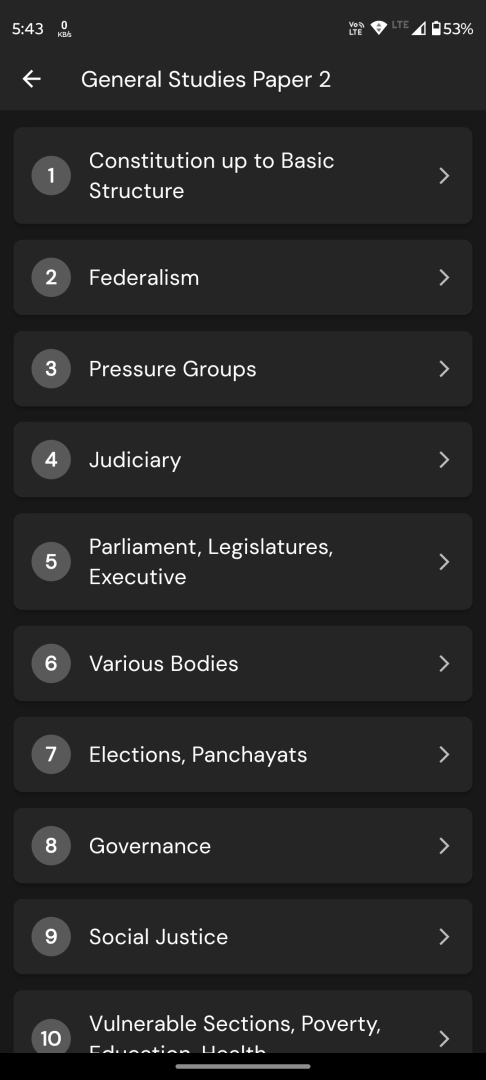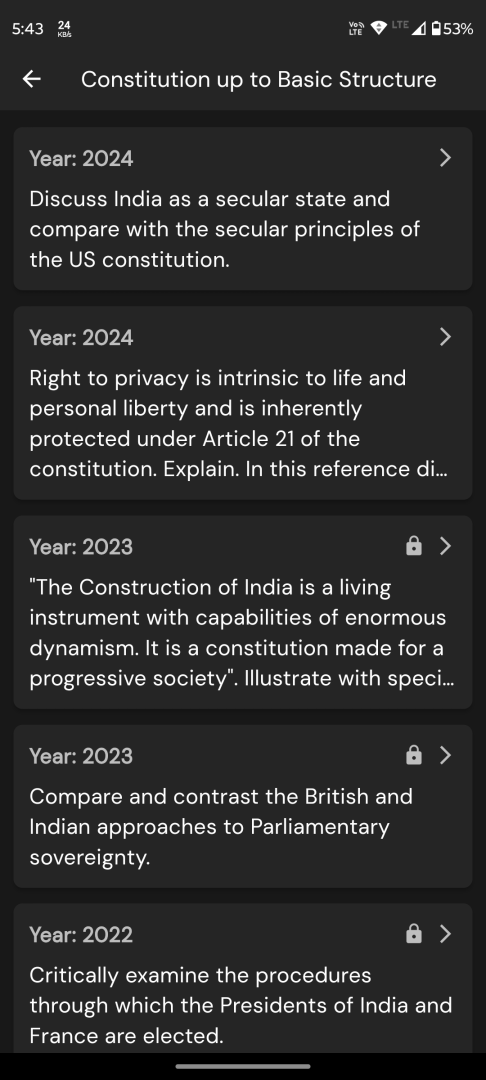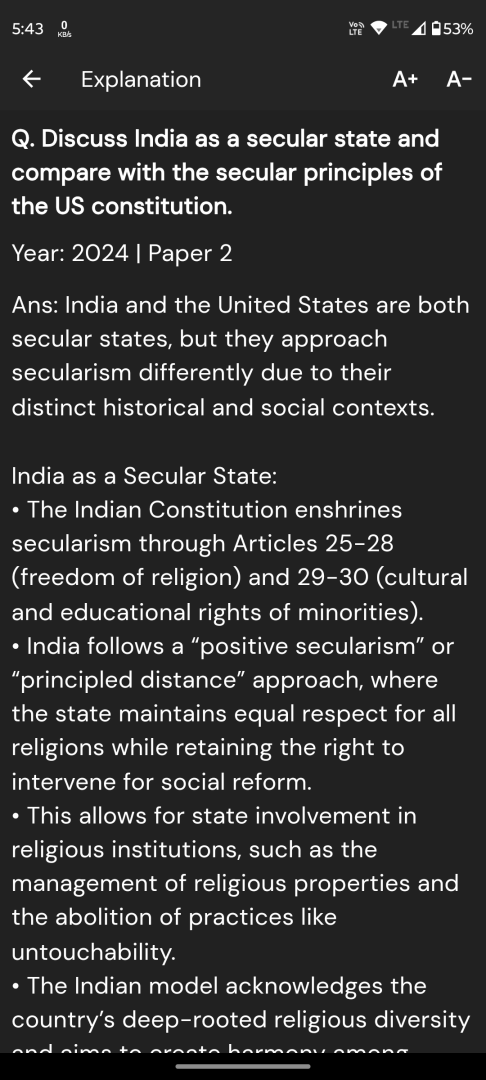Q. Let both p and k be prime numbers such that (p² + k) is also a prime number less than 30. What is the number of possible values of k?
(a) 4
(b) 5
(c) 6
(d) 7
UPSC Prelims 2025 CSAT
Explanation :
We want primes p and k such that
p² + k is prime and p² + k < 30.
Step 1. Bound p.
Since k ≥ 2,
p² + 2 < 30 ⇒ p² < 28 ⇒ p ≤ 5.
So p can be 2, 3, or 5.
Step 2. Test each p:
1. p = 2 ⇒ p² = 4.
Check prime k so that 4 + k is prime < 30:
• k = 2 → 4 + 2 = 6 (not prime)
• k = 3 → 4 + 3 = 7 (prime)
• k = 5 → 4 + 5 = 9 (not prime)
• k = 7 → 4 + 7 = 11 (prime)
• k = 11 → 4 + 11 = 15 (not prime)
• k = 13 → 4 + 13 = 17 (prime)
• k = 17 → 4 + 17 = 21 (not prime)
• k = 19 → 4 + 19 = 23 (prime)
• k = 23 → 4 + 23 = 27 (not prime)
Valid k’s here: 3, 7, 13, 19.
2. p = 3 ⇒ p² = 9.
Check k so that 9 + k is prime < 30:
• k = 2 → 9 + 2 = 11 (prime)
• k = 3 → 12 (no), k = 5 → 14 (no), … all larger k either composite or >30.
Valid k: 2.
3. p = 5 ⇒ p² = 25.
Then 25 + k < 30 ⇒ k < 5; only k = 2 or 3:
• k = 2 → 27 (not prime)
• k = 3 → 28 (not prime)
No solutions for p = 5.
Step 3. Collect all distinct k found:
From p = 2: {3, 7, 13, 19}
From p = 3: {2}
Total distinct k’s = {2, 3, 7, 13, 19}, which is 5 values.
Answer: (b) 5.





